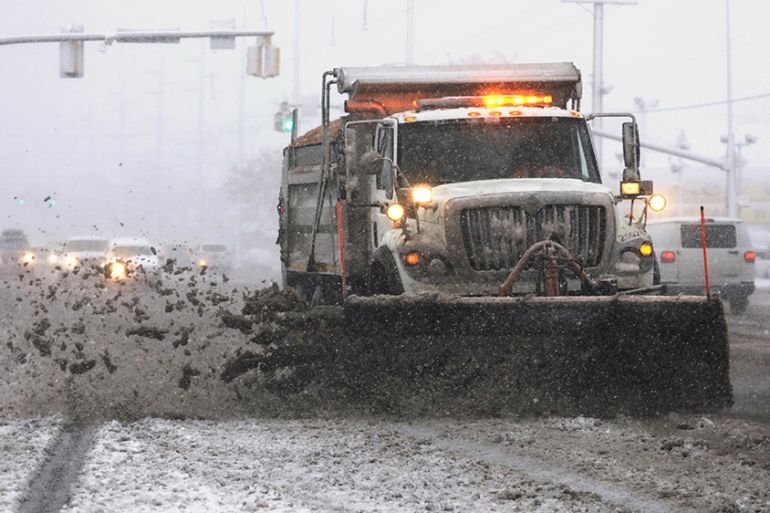US: Blizzards bring widespread disruption to Rocky Mountain area
Major snowstorm causes extensive flight delays and road accidents across the states of Utah and Wyoming.

A major storm that dumped snow throughout the Rocky Mountains region in the United States has prompted a rare decision to close public schools in Salt Lake City, Utah.
The blizzards caused extensive flight delays and traffic accidents, shutting down stretches of highways in Utah and Wyoming on Monday.
Keep reading
list of 4 itemsAfter the Hurricane
World’s coral reefs face global bleaching crisis
Why is Germany maintaining economic ties with China?
There were snow accumulations of 46 centimetres (18 inches) in some parts of the greater Salt Lake City area, with more forecast to fall through the night.
The nearly 23 centimetres (9 inches) that fell at the Salt Lake City International Airport broke a record for the day – set back in 1936 – the National Weather Service said. Flights there were delayed by over an hour.
Many Utah school districts took the rare step of cancelling classes, in what was the second snow day for the Salt Lake City School District in nearly 20 years. Elsewhere, colleges, courts and government offices delayed opening.
The Utah Highway Patrol said it responded to 257 crashes throughout the state. The snow closed long stretches of Interstates 80 and 25 and other roads across central Wyoming, where up to 30 centimetres (12 inches) of snow was forecast at lower elevations.
The National Weather Service posted winter weather warnings for Wyoming, including a blizzard warning for a stretch of Interstate 80 that could experience both heavy snow and wind gusts up to 88km/h (55 mph).
The storm also shut down some Wyoming schools, a community college and the local airport in the central city of Casper.
In Colorado, the storm brought freezing drizzle and light snow to the populated Front Range region on Monday morning, a day after residents enjoyed temperatures in the low 20s Celsius (70s Fahrenheit).
The precipitation has now all turned to snow and is expected to continue through Tuesday along the Front Range and on to Colorado’s northern mountains.
The storm is then forecast to move into the south-central US and the eastern part of the country later this week, the National Weather Service said.